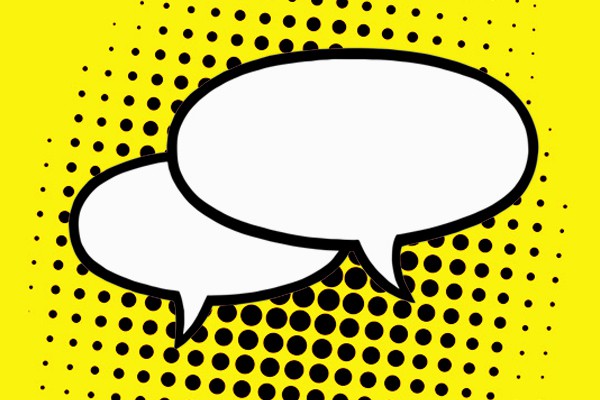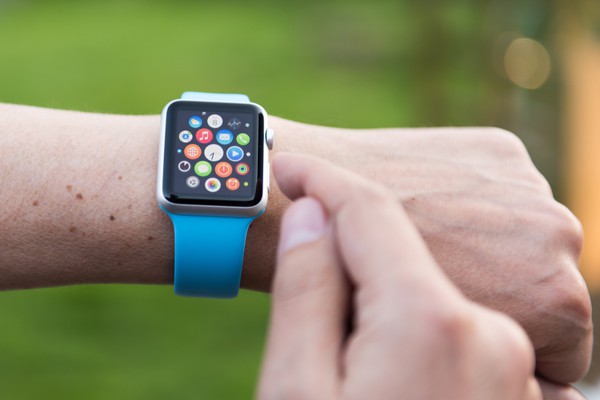Connect the Dots to Transform Broken Customer Experiences
Many businesses are coming to understand that how an organization delivers their customer experiences is as important as the product and services they provide. But we increasingly see the same businesses failing to build holistic customer experiences that span all routes of customer interaction, instead they focus on optimizing disparate pieces instead of enhancing the whole.
As consumers, we experience and interact with brands in a diverse and ever-growing number of ways—on the side of the road, on the shelf, via social media, and even the old classic: in person. We think of brands as singular entities and expect to be able to engage with them in any way we see most fitting for a given situation. This engagement can be anything from placing orders online, processing returns on mobile sites, interacting with customer service by phone, or receiving progress updates via a smart, for example. Often, there’s a lot of new dots placed on the map of customer experience, but not a lot of work being done to connect them.
Why does it matter? Because brand and customer engagement is a lot like old-school Christmas lights: String all the connection points one to another, and you achieve a consistent glow from end to end—a sparkly sense of brand awareness and engagement through and through. Break the chain anywhere along the way, however, and you get disappointment—pools of darkness, signals lost—in other words, missed opportunities to deliver on customer expectations.
START HERE.
At THRIVE, we’ve seen this phenomenon happen again and again through our work with organizations of all types. And we have some thoughts about how things can go wrong, as well as how companies can address common problems to start putting the pieces of their broken customer experiences together.
DISCONNECT #1: Silos.
In large organizations, different teams tend to spend their time working on a single part of the customer experience. The app group. The kiosk team. Marketing. Packaging design. It’s understandable — big organizations have lots of projects going at once, and individuals tend to have distinct areas of expertise. But while each team is busily working to launch the next big thing, there is often little time, space, or cultural incentive to look up at the big picture, or over at what other groups are doing with the goal of ensuring the work at hand connects with the greater whole.
Sometimes it’s about distance—teams working in different hemispheres and disparate time zones. Sometimes it’s about deadlines—there never seems to be enough time to focus on anything but the next deliverable. And sometimes it’s about a lack of comfort crossing out of silos and into the unknown.
Regardless, silos have a great way of shutting out communication, collaboration, and integration. The sum can be greater than its parts if the parts get into the habit of connecting more meaningfully with one another.
CONNECTING THE DOTS: Let the customer drive.
Breaking down silos begins with understanding the customer, their wants, needs, and various journeys through the total experience. THRIVE starts with empathy and digs into the customer’s world via ethnography, but companies might also begin with understanding all the different paths a person could take and then working across silos to piece the full, potential experience together. If a customer wants to start an order on the phone for example, but finish in a physical store, and still have the opportunity to talk to someone in a customer service position on the phone or online, all of those touchpoints should allow them to walk that path uninterrupted.
The idea is to take what could be the work of 10 different internal groups and make it feel completely integrated. A good way to do that is to make the journey intensely customer-driven instead of organization-directed. The company may consider one route to completing a task the “right” one, but needs to give the customer all the possible paths to accomplish any task in the way they see fit. Flip the script: It’s not about what the company wants the customer to do, it’s about what the customer wants from the company. Clothing brand Bonobos does a great job of this, for example. Customers can connect to the company via phone or chat, order online, or even visit a Guide Shop and get real-life, human interaction.
DISCONNECT #2: What’s this new thing?
A forward-looking organization is forever developing new ways to engage with customers. Unfortunately, customers aren’t always made aware of these new developments. There can be an expectation that simply because something new is introduced, the customer will inherently and immediately pay attention to it. The reality is, people are creatures of habit, and most of the time, someone isn’t going to pay attention to much more than the product they came in for—unless they’re expecting something different.
CONNECTING THE DOTS: Over-communicate and boast benefits.
Solving the “Surprise, it’s new!” problem for customers involves two communication strategies.
First, we’d encourage businesses to over-communicate introduction and explanation of a new touchpoint or feature on every channel possible. The options for communicating are almost endless: Marketing, signage, other touchpoints and people—store employees, customer service and sales reps, to name a few—are all fair game to broadly communicate a new experience. Further, every mention exponentially increases the possibility of customer understanding and buy-in—if they miss it the first time, maybe they’ll hear, “This is new! Come and enjoy it!” the second or third time?
Secondly, talking in terms of benefits is helpful. This involves asking “why?” and answering it for the customer. Why would I want to use the kiosk instead of talking to the person behind the counter? Because it’ll help you skip the line and get what you need faster. Offering a clear explanation of meaningful benefits helps customers see what’s in it for their effort of trying something new and different—and helps them say “yes” more readily.
DISCONNECT #3: Analog is from Mars, digital is from Venus.
Customer touchpoints come in all flavors, from virtual to physically “touching.” It’s easy to imagine how a digital coupon app might work with an online ordering system, for example, but what happens when a brand’s interaction points include things that aren’t as obviously connected, especially those that cross the analog/digital divide? In our experience, gaps happen: A customer can order clothes on a mobile site, but can’t initiate a return on the same site. It’s obvious that a digital coupon can be used via a brand’s webpage, but not so clear if one can use it at the counter in a physical store. For that matter, what about using a physical coupon online?
The net result is a confused clientele left wondering what they can and cannot accomplish at various points in the experience. Alongside this often comes a lack of communication about how different touchpoints work together — and customers are left wondering if certain experiences that feel like they should connect can…or if they maybe already do, but it’s just not obvious. Regardless, it’s not a good state of mind in which to leave buyers.
CONNECTING THE DOTS: Don’t just check the box.
In the consumer products world, there’s a huge push to be omnichannel — and therefore, in some situations a rush to become such that results in companies hastily creating different digital and physical touchpoints without giving serious thought to what any of it is supposed to accomplish. We’d call this “omnichannel for omnichannel’s sake,” and it’s detrimental to the customer experience.
The solution: View the customer experience through the audience’s lens, and create only the touchpoints that can be fully formed at launch, fully integrated with others, and meaningful to the overall experience.
CUSTOMER EXPERIENCES: THE FINISH LINE.
What can truly great, integrated customer experiences do for companies? Three things:
Create excitement instead of confusion.
Change is scary and sometimes bewildering—especially if it is imposed unexpectedly. But what if companies introducing new technologies, new touchpoints and new ways to interact with their brands instead used the opportunity to promote the experience beforehand, communicate with customers about benefits and create excitement for the new and improved? Confusion could be alleviated, and the expectation could be set at “Yeah!” rather than “What?”
Simplify instead of creating complexity.
Generally speaking, the point of most new (and most digital) touchpoints is to simplify things, but if the experience doesn’t help streamline the interaction, you’re only adding complexity. Technology should be invisible, not an extra step or barrier that adds work for customers simply trying to get what they need and then get on with their lives.
Create meaningful differentiation.
When all your dots are connected and your customer experiences are meaningful, seamless, and truly adds value, it’s a clear differentiator. Take fast-casual restaurant chain Panera. Many restaurants have gluten-free, vegetarian, organic and natural offerings, but Panera owns the category with clear communication of its versatile meals, healthy options and customizable offerings like “add your own sweet” tea stations on every channel possible—in store, in radio and television commercials and online communications. They’ve also been very successful in finding new ways to streamline their respective customer experiences, from table delivery to order-ahead and kiosk ordering. Over the whole “menu” of interactions, they provide an integrated message that cuts through the clutter and reaches hungry customers at every turn.
When you think of your brand’s customer touchpoints, do they feel more like a constellation of disconnected dots or a clearly connected pathway toward brand awareness and loyalty? If it’s the second, it could be time to think through the customer experiences you offer from the customer’s perspective, break out of institutional silos, and get out the pencil and paper and connect the dots.










